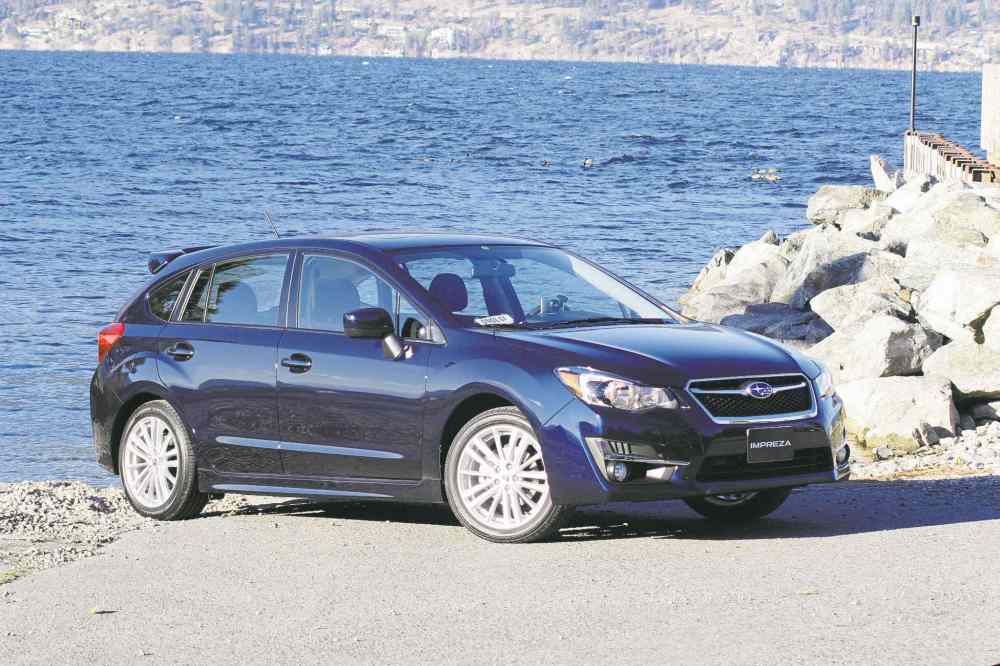Subaru offers variety of all-wheel-drive systems
Advertisement
Read this article for free:
or
Already have an account? Log in here »
To continue reading, please subscribe:
Monthly Digital Subscription
$0 for the first 4 weeks*
- Enjoy unlimited reading on winnipegfreepress.com
- Read the E-Edition, our digital replica newspaper
- Access News Break, our award-winning app
- Play interactive puzzles
*No charge for 4 weeks then price increases to the regular rate of $19.00 plus GST every four weeks. Offer available to new and qualified returning subscribers only. Cancel any time.
Monthly Digital Subscription
$4.75/week*
- Enjoy unlimited reading on winnipegfreepress.com
- Read the E-Edition, our digital replica newspaper
- Access News Break, our award-winning app
- Play interactive puzzles
*Billed as $19 plus GST every four weeks. Cancel any time.
To continue reading, please subscribe:
Add Free Press access to your Brandon Sun subscription for only an additional
$1 for the first 4 weeks*
*Your next subscription payment will increase by $1.00 and you will be charged $16.99 plus GST for four weeks. After four weeks, your payment will increase to $23.99 plus GST every four weeks.
Read unlimited articles for free today:
or
Already have an account? Log in here »
Hey there, time traveller!
This article was published 20/08/2015 (3728 days ago), so information in it may no longer be current.
Question: As most people know, these days, Subaru has AWD standard on their entire lineup, with the exception of the BRZ. However, I have been told that Subaru uses two different AWD systems; one for cars equipped with a manual transmission and one for cars equipped with an automatic transmission. What is the difference between these two systems and which system do you feel is superior?
Answer: Subaru actually uses four different types of all-wheel-drive, depending on transmission type and model application. For models equipped with a manual transmission except the WRX STI, they use a viscous-coupling centre differential AWD. The viscous coupling uses a fluid that thickens when it is forced to move, causing both front and rear axles to drive with a 50/50 front/rear torque split. This provides near neutral handling with excellent traction.

Automatic transmission equipped models use an active torque split AWD with a multi-plate transfer clutch operated by a computer to maintain a 60/40 front-to-rear torque split which is continuously adjusted to maintain optimum traction. This system places more of a focus on fuel efficiency and ease of vehicle operation.
The Subaru WRX with the CVT transmission uses variable torque distribution AWD which is a combination of the two systems, with a viscous coupling and multi-plate clutch. The system adjusts the torque from a 45/55 front/rear split in normal conditions to a sportier 50/50 split when road conditions deteriorate. This provides more traction in adverse conditions.
Finally, the high-performance WRX-STI has a driver-controlled centre differential where the driver can adjust the torque split from 41/59 front rear/split to a 50/50 split. This can be done manually or in several automatic modes.
All the systems work well, with the WRX-STI system being the ultimate system but for all other models, I do prefer the manual transmission with the viscous-coupling AWD simply because I like performance vehicles. Don’t let that persuade you in a purchase however. Chose the transmission and model you want. All the systems are excellent in providing performance, traction and safety.
Question: My 2002 Toyota Corolla has a manual transmission and I think it needs a new clutch. It seems fine once it is moving down the road and on the highway, but when I try to pull away from a stop, the engine revs up and the car doesn’t seem to accelerate at all. If I back off the gas pedal and try to accelerate slowly, the car will go. What could be wrong with the clutch?
Answer: It does sound like you have a problem with the clutch mechanism but it may be a much smaller problem than you think. Clutches are a normal wear part of a vehicle and the wear is created as they slip when you use them every time you pull away from a stop. Eventually it wears the friction surfaces of the clutch disc so much that it can’t be gripped by the clamping force of the pressure plate and flywheel. Then the clutch needs to be replaced.
However, when a clutch is slipping, it will slip more in the higher transmission gears where it doesn’t have the gear ratio advantage to help move the vehicle. This means it would tend to slip in higher gears on the highway, especially when more power is requested such as passing. Your car clutch doesn’t seem to be slipping at higher speeds, so I don’t think the problem is with the actual clutch but rather with the hydraulic system that activates the clutch.
When you step on the clutch pedal, it forces fluid from the master cylinder through a pipe to the slave cylinder, which operates the clutch. When you release the clutch pedal, the fluid is supposed to flow back from the slave cylinder into the master cylinder and reservoir. The master cylinder has a small hole that allows fluid into it from the reservoir. If this hole is plugged with dirt, then the clutch fluid can’t return properly. It is like having your foot half way to the floor on the clutch pedal, and the clutch slips as you accelerate.
A small leak at the firewall side seal of the master cylinder can also prevent the piston from returning all the way back, which acts the same as having the small hole plugged. I think your car’s problem is with the clutch master cylinder, and you should have it looked at as soon as possible so the clutch doesn’t continue to slip and wear out.
kerr.jim@sasktel.net

